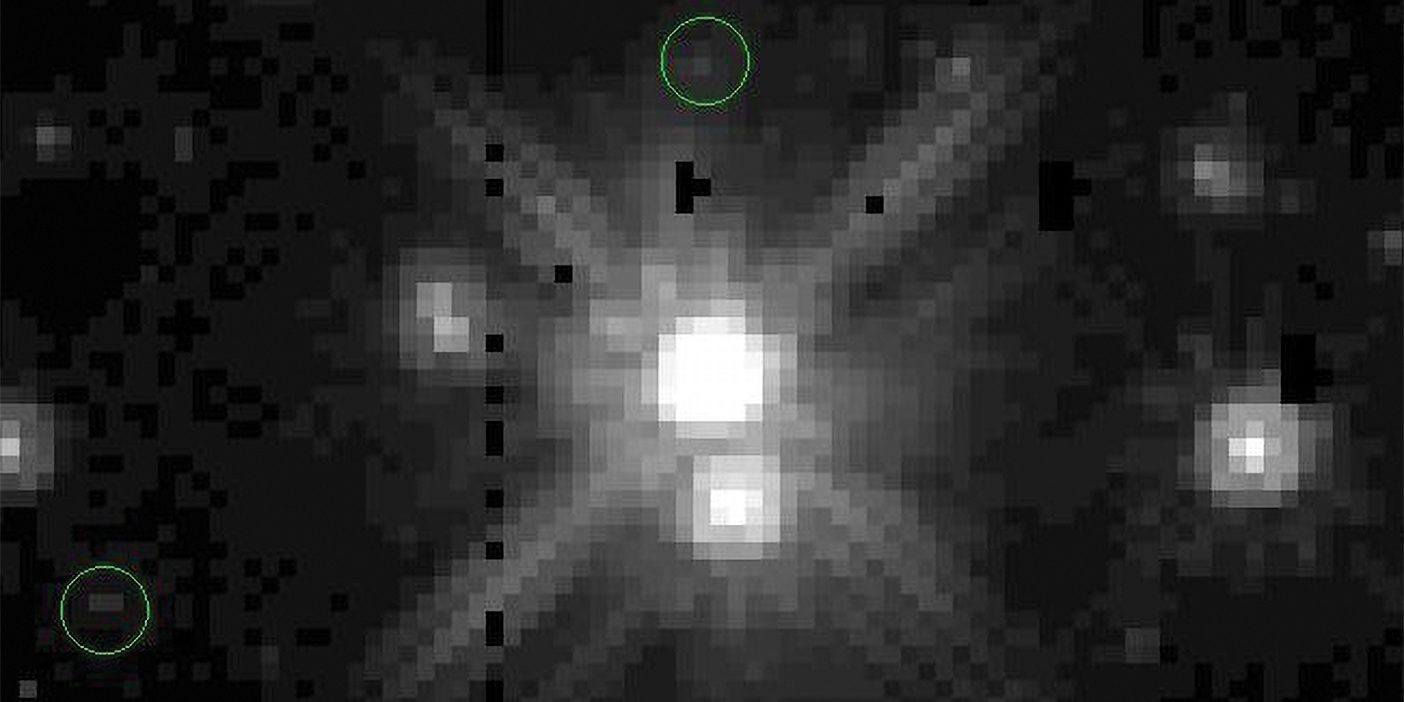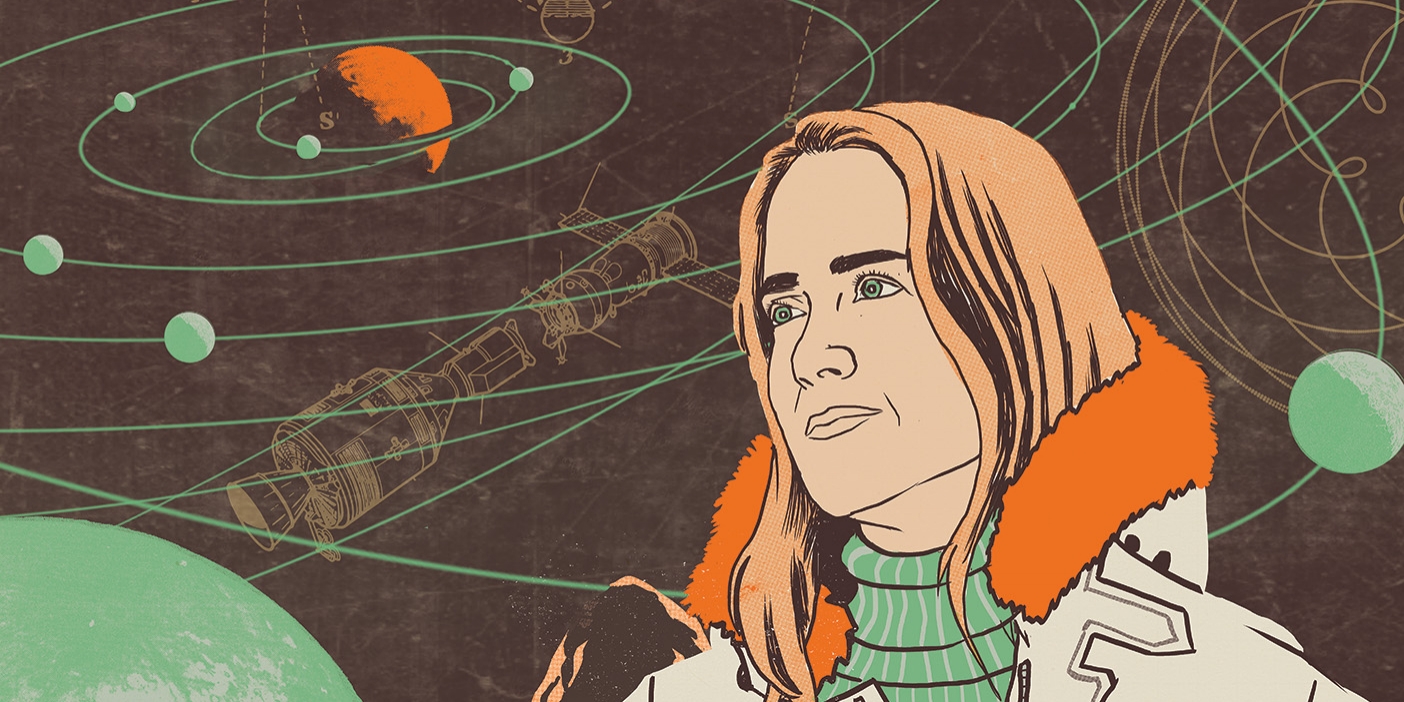
Before the New Horizons space probe traveled 3 billion miles to take a close-up of Pluto in 2015, the best images we had of the one-time planet were a hazy orb of pixels taken by the Hubble Space Telescope, 30 years old this year. These images of Pluto and its moons, like the one above captured in 2007, are a far cry from the telescope’s famous space-scapes of colorful galaxies and nebulae with rainbow clouds. But to BYU astronomy professor Denise Nuttall Stephens (BS ’96), those pixels are full of things to discover.
“I love finding new things,” says Stephens. “There’s that draw to the unknown—and space is this immense unknown.” Over the years, Stephens and fellow astronomy professor Darin Ragozzine have worked directly with Hubble operators to learn about a mysterious region of space at the far reaches of our solar system that Pluto calls home—the Kuiper Belt. Stephens studies and discovers multibody systems—when multiple celestial objects orbit around a common center of mass—while Ragozzine has his sights on another Kuiper Belt Object (KBO)—the dwarf planet Haumea, famous for its peculiar oval shape.

Hubble images start out in gray and are sometimes colored to reflect qualities like mass and distance. To make sense of these images, Stephens, Ragozzine, and other scientists read them like charts that show how many light particles the telescope picked up in each pixel. That information helps them understand where KBOs are located, how far apart they are from each other, and how they interact. Not a simple task. “You almost need a PhD to connect the dots,” says Ragozzine.
With Hubble images of the Kuiper Belt, Stephens has discovered binary systems—two astronomical objects of similar mass orbiting each other. Her first discovery came in 2001, and since then she’s discovered 18 other binary systems.
With his Hubble images, Ragozzine discovered that the oval shape of Haumea bends its moons’ orbits into unusual patterns. As more Hubble images are collected, Ragozzine hopes to use the observed bending of orbits to measure the shapes of more objects.
All the questions and complexities are what keep Ragozzine and Stephens driven in their work. “Complicated things—like bending orbits—can be good,” says Ragozzine. “When things are complicated, sometimes you can learn more.”












